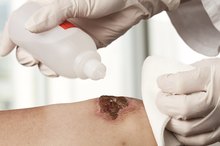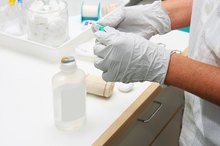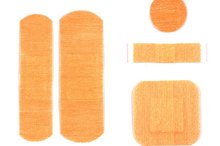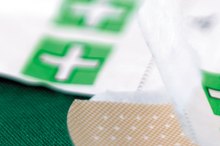Tegaderm Alternatives
Tegaderm is a dressing made of a thin polyurethane membrane which is coated with a layer of an acrylic adhesive 1. Once applied on a patient, it will prevent external contamination while maintaining a moist environment at the surface of the wound. Tegaderm prevents scab formation, so epidermal regeneration occurs at an enhanced rate compared to dry dressings 1. There are plenty of other kinds of dressing that can be applied instead of using the Tegaderm dressing 1.
Various Kinds of Tegaderm
Tegaderm and similar dressings are used for minor burns, donor sites, pressure areas, post-operative wounds, and for minor injuries such as:
- abrasions
- lacerations 1
Before looking at other kinds of dressings, it is helpful to know that there are different kinds of Tegaderm dressings 1. One alternative product is Tegaderm Plus, which contains iodine 1. It is applied over the wound and under another absorbent dressing or gauze and can be left on a wound for up to 7 days.
Opsite Flexigrid Dressing
How to Use Promogran Prisma Matrix Wound Dressing
Learn More
One alternative to a Tegaderm dressing is Opsite Flexigrid which is a transparent, adhesive film that provides moist-wound healing and can be used as an additional dressing to help prevent pressure sores 1. Like Tegaderm, Opsite promotes quicker, safer, wound healing and it is flexible with a waterproof film 1. When using Opsite, the dressing should be changed daily. Those with diabetes, or patients who have weakened immune systems, may need extra medical supervision to prevent skin damage by repeated applications because of thin or fragile skin. Irritation may occur due to the adhesive.
- One alternative to a Tegaderm dressing is Opsite Flexigrid which is a transparent, adhesive film that provides moist-wound healing and can be used as an additional dressing to help prevent pressure sores 1.
- Those with diabetes, or patients who have weakened immune systems, may need extra medical supervision to prevent skin damage by repeated applications because of thin or fragile skin.
Transparent Dressings
Alternatively, Alginate dressings which contain calicum alginate, biosynthetic dressings, and collagen dressings are also available 1. Composite dressings are similar to plastic adhesive strips which include a semi-adhesive surface, a bacterial layer and an absorbent layer 1. Contact layer dressings have a perforated or woven polymer material to prevent another dressing such as Tegadrerm from sticking to the wound 1. Hydrocolloid dressings are attached to a foam sheet or a thin polyurethane film, and Hydrofiber dressings turn into a gel when in contact with wound fluid 1. Hydrogels dressings also provide moisture to wounds 1. Polyurethane foam dressings draw fluid away from a wound 1. Transparent films have a special adhesive that prevents sticking to moist surfaces, however, these films allow some circulation of oxygen. Which dressing you choose largely depends on its application and purpose. Links to websites in the Resource section provide more detailed information about transparent dressings 1.
Related Articles
References
Writer Bio
Dawn Sutton began her writing career in 2004 with an article on Internet counseling for a psychology journal. She writes numerous Internet articles on a variety of subjects including health, travel, education, crafts and much more. Sutton has published the books "The Manual" and "God's Girl" and numerous feature film scripts. She has a master's degree in social work from the University of Toronto.






